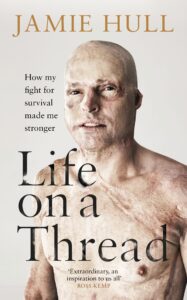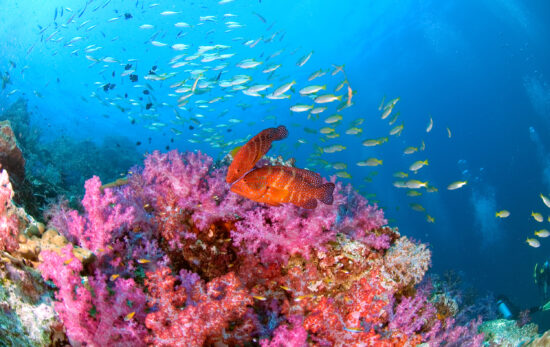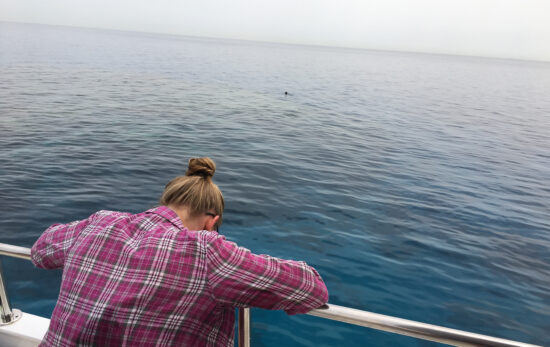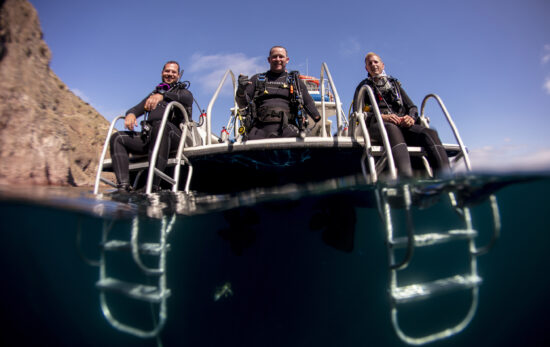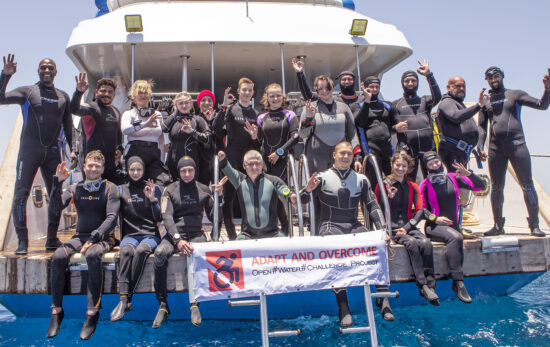We all come to scuba diving through different means. For some of us, the journey to becoming a certified diver and working our way up the PADI certification ladder is simple and straight forward. For others, the journey is full of challenges. We recently had the pleasure of interviewing Jamie Hull, a former British serviceman and one the most inspirational human beings, who has overcome huge challenges to reach his goal of becoming a PADI Course Director.
While Jamie Hull has been a PADI diver for 25 years and has always been extraordinarily courageous, driven and passionate, he was forced to draw on these attributes after a life-changing plane crash left him with third-degree burns on over half of his body. Jamie Hull rebuilt his life after several years of hospital treatment, skin grafts and countless operations.
Five years after his plane crash, Jamie Hull was able to get back in the water. He has now earned the PADI Course Director rating and is committed to teaching divers who are also experiencing challenges. He hopes to help these divers overcome their physical and mental hurdles to become PADI Instructors, just like he did.
We asked Jamie Hull a few questions about his scuba diving journey both before and after his accident. You can read his answers below.
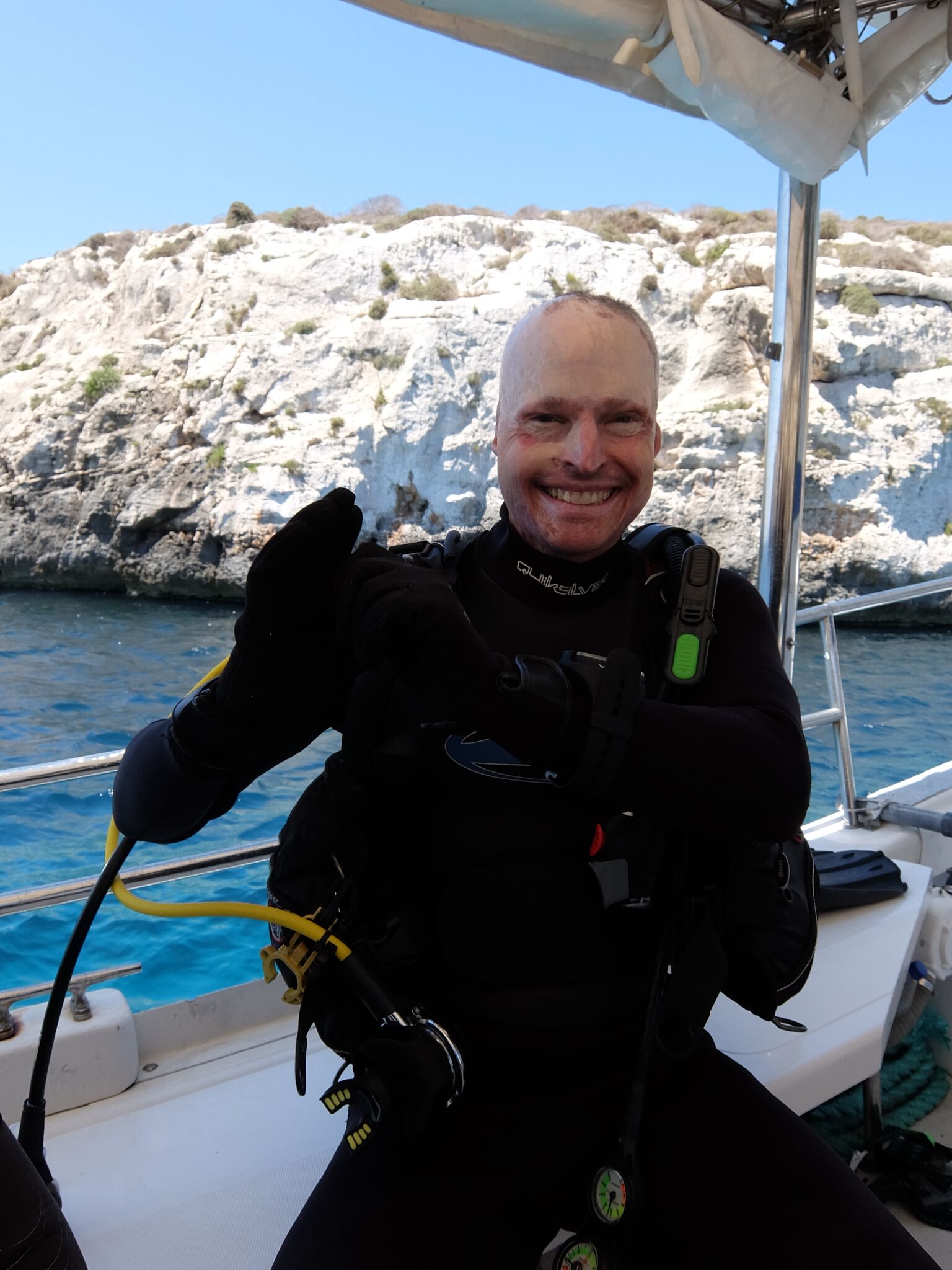
You’ve written about learning to dive before your accident on a trip to Australia and your instant connection with the underwater world. What motivated you to take the plunge and get certified on that trip?
Back in 1996, I was a young backpacker working my way around the world. Scuba diving was frankly one of those must try experiences on my bucket list. The Great Barrier Reef was the go-to place for aspiring divers, so I signed up for a PADI Open Water course in Bundaberg – the gateway to the Barrier Reef in Southern Queensland. Submerging into the crystal clear water for my first open water qualifying dives was like the dream. Dozens of Bat fish were cruising around as I kneeled in the fine white sand to demonstrate my skills with the Instructor. I couldn’t believe the sound of my own breath through the regulator, underpinning the knowledge that I was actually a human being under water. Ultimately, I was hooked from that moment on – the sport made me feel so alive!
You also describe scuba diving as your “refuge” and your “escape.” How did this help you during your time at university and in the military?
By the time I got to university and the Cambridge University Officer Training Corps, I was a PADI Open Water Instructor myself and I was taking every opportunity to get away on dive trips. I have great memories of teaching my fellow officer cadets on an Army’ sponsored expedition to the Red Sea. It was an absolute privilege to be guiding members of the team on the infamous WWII wreck of the ‘SS Thistlegorm’. I already had knowledge of the sunken ship, having previously worked for Emperor Divers in Egypt. During my second year of study, I was living in Norway and learning the language. Diving became a tremendous source of adventure and escapism in the local fjords. I even did Ice diving beneath the frozen fjord during Winter months and again, I even found myself teaching some of the curious locals in the Spring!
As you wrote in your book, recovery from your accident was slow, including years of hospital stays and surgeries. When and how did you decide it was time to return to scuba diving?
This was a tricky dream for me to realise once again. Truth be told, I needed a lot of time to heal both physically and mentally following my burns injury – 5 long years to be precise. I’d simply lost all confidence and, furthermore I was especially anxious about the risk of salt water and scuba equipment damaging the multitude of surgical skin-grafts which I’d now acquired. Being laid up in the hospital for as long as I was, I had a lot of time to think about the future and day dream. I had a long rehabilitation, which included learning to walk again as well as hydrotherapy at the hospital. When I got back in the warm pool to exercise the muscles I dreamed of diving in a tropical environment once again.
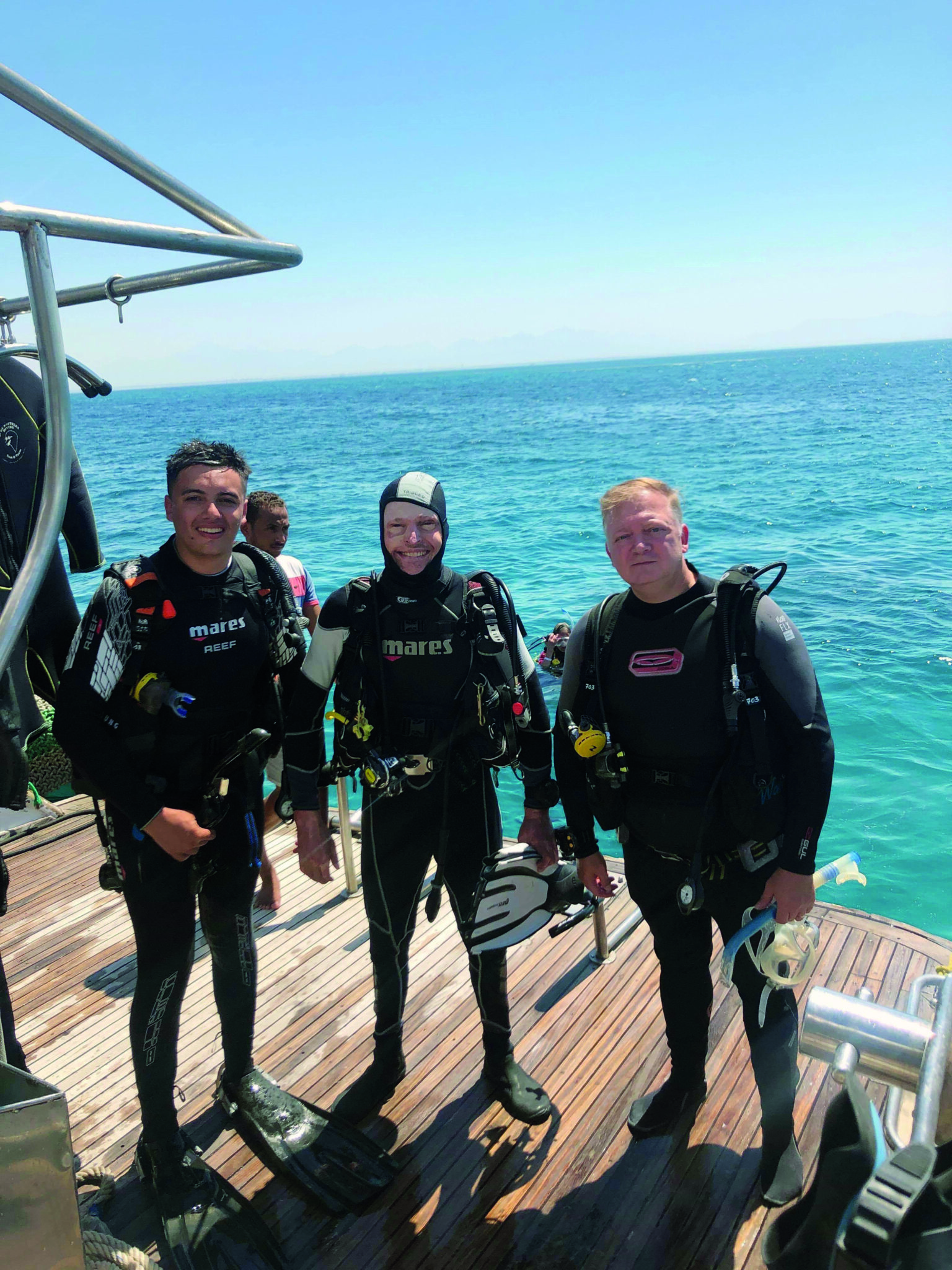
You’ve mentioned that scuba diving helped in your recovery, both physically and mentally. Could you talk a little bit more about that?
After several gruelling years of surgery and rehabilitation, I wanted to dive again despite my concerns. But I need not have worried, for it was the right time in my healing and, donning a fresh neoprene wet-suit, I managed a giant-stride back into the Red Sea 5 years after my burns injury. To my sheer joy and astonishment, I soon realised the ocean became my friend again – my healing salvation. The salt water was like therapy for my skin and rapidly promoted my healing in ways I could never have imagined. Any marine biologist will attest, there is a very healthy mineral balance within our ocean which is closely aligned with our skin’s natural PH balance – it was just the environment I needed. This notion also spurred on my self-esteem and, perhaps crucially, it also helped me to come to terms with the life-changing nature of my injury.
Not to give everything away, but your book ends with you back in the water, chasing happiness. What happened after your dive trip to Egypt? Did you continue to scuba dive?
Yes, absolutely. Upon realising the direct health and well-being benefits I received from being back in open water, my passion for diving was fundamentally reignited – the enhanced healing was all the evidence and hence motivation I needed to continue my diving activities. I wanted to be able to pass on that knowledge further to others – albeit in this new skin and in the new body, so to speak. The obvious progression for me was also to challenge myself further by climbing the PADI Instructor ladder, in order to develop my skills further and to be able to offer a wider range of PADI courses to my students. I worked on a lot of diving expeditions, teaching in Malta with the charity Help for Heroes, before heading out to South-East Asia to embark on my ambition to become a PADI Master Instructor.
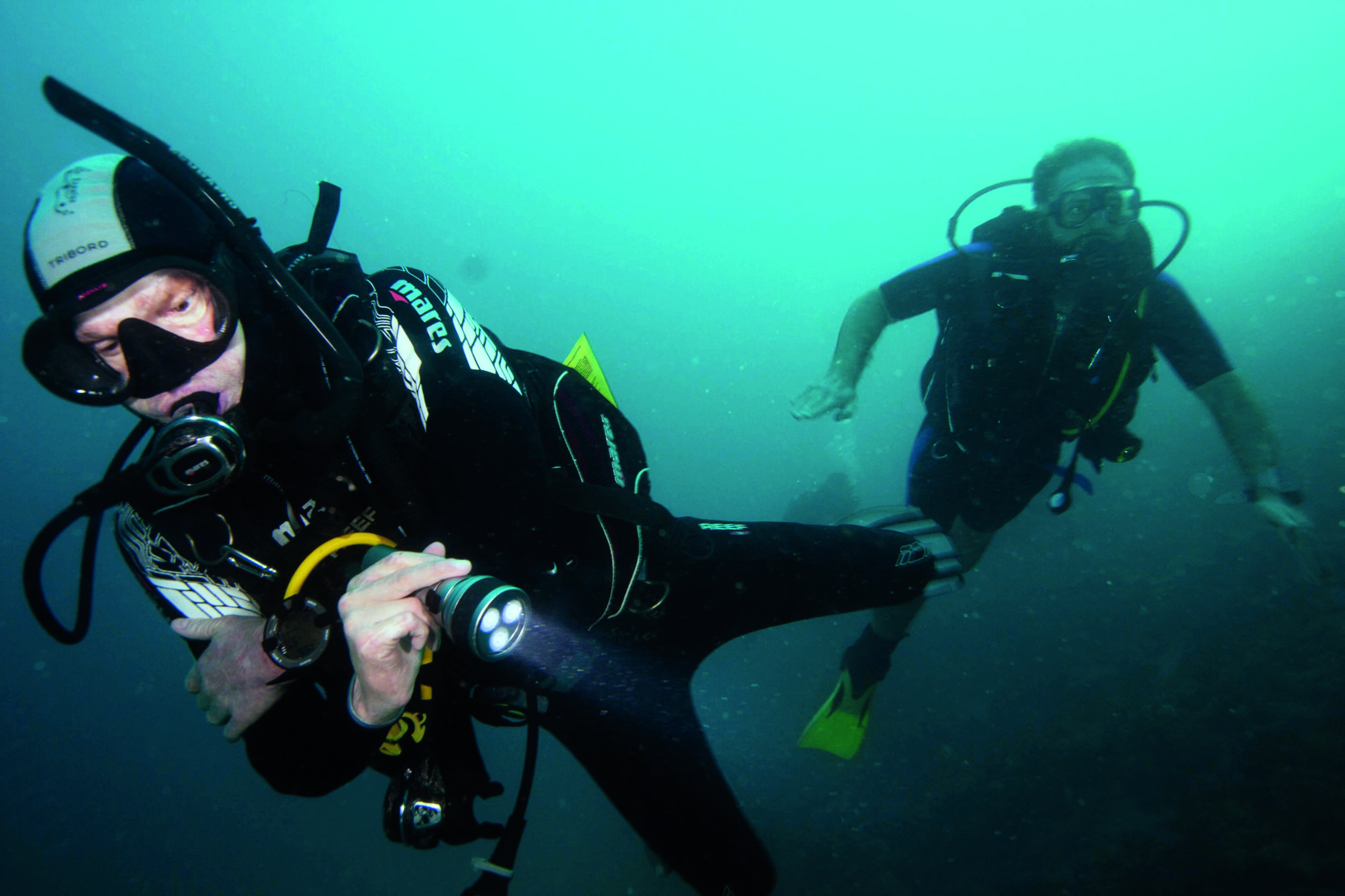
We’ve heard about your work with adaptive techniques. How has your injury and your subsequent work as a PADI Course Director enabled you to inspire and help others of varying abilities to get into scuba diving?
I’ve had the honour of working with fellow military veterans in various locations around the world. Having trained with PADI Adaptive Techniques as an Instructor and had the privilege of working on a number of military expeditions with all manner of injured veterans, I’ve learnt to think outside the box, in order to help adapt their diving experience and training, and to really consider the pace of training, equipment configurations and above all, the safety and supervision within the diving environment. I believe that having survived my injury and having retrained as a leading PADI Instructor, I’ve been able to inspire fellow injured veterans to realise their dreams of learning to dive, or even becoming future PADI professionals themselves. Ultimately, where there’s a will, there’s a way – I can prove that!
You’ve been on so many amazing dives around the world. What’s your best dive story?
That’s all too true in my case. I’ve actually had the good fortune of working in the industry as both a PADI Divemaster and an Instructor, in so many locations from temperate to tropical water environments. I’ve always had a stronger preference for the tropics and, in a by gone era, I have a treasured memory of a drift dive in a very remote part of the Philippines. It was shortly after sunrise on a deep wall dive, the current was running smoothly and my diving buddy and I drifted effortlessly downstream. I remember the vast array of pelagic shark life gently meandering towards us against the current, heading upstream on their early morning commute. We then ascended shallower and drifted around and over the top of the most colourful and vibrant reef I’ve witnessed anywhere on the planet. At our safety stop, there must have been 50 turtles or so to greet us in attendance. That’s the magic of diving and what motivates me to go always a little further – you never really know what’s around the corner!
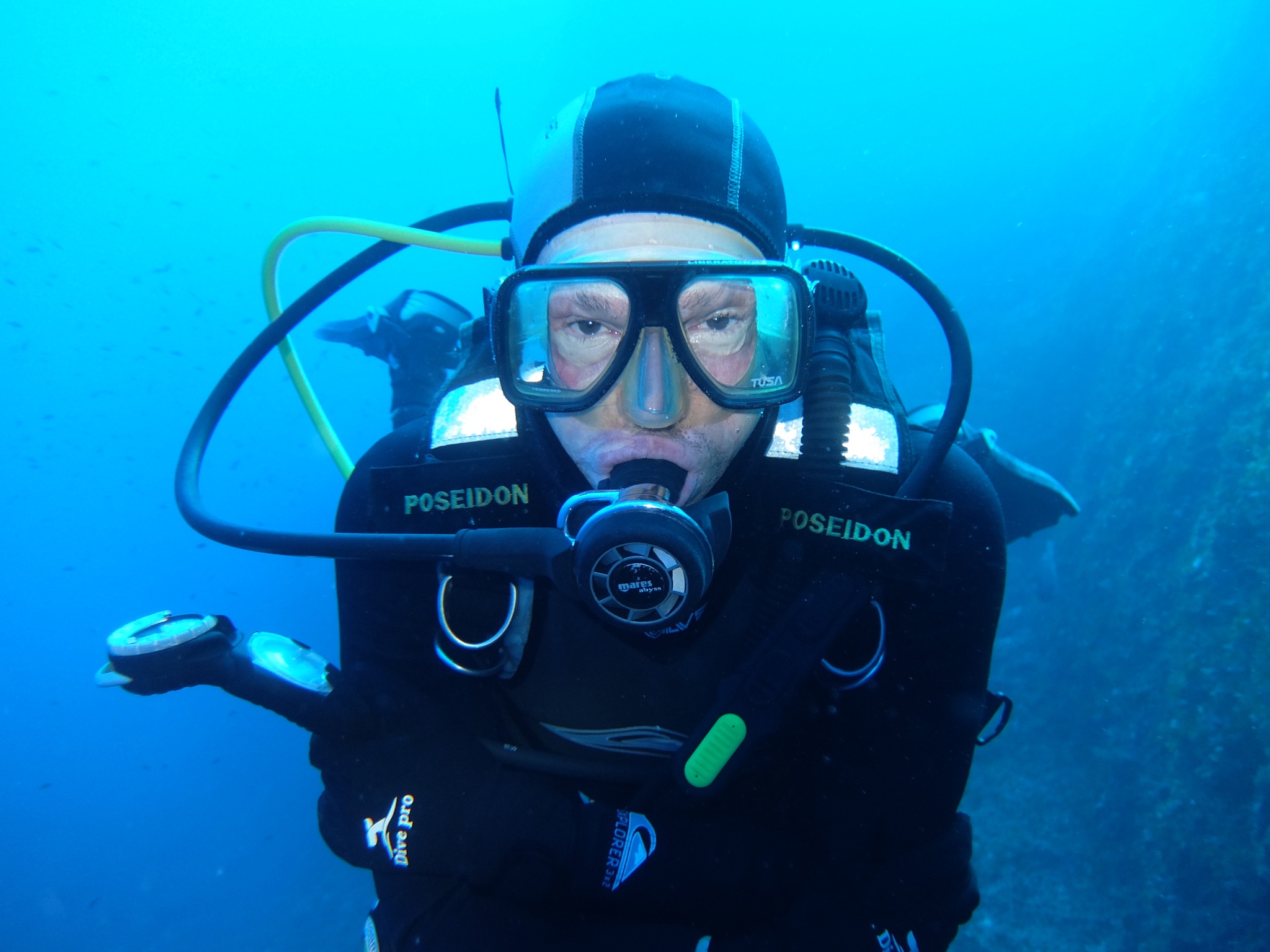
You are definitely a man with a never-ending drive for adventure. So, what’s next? Do you have any scuba diving expeditions or other adventures planned?
There will undoubtedly always be scuba diving adventures. My most recent trips have included diving around the Horn of Africa and the Maldives, where I was fortunate enough to spot the majestic Whaleshark in both locations, respectively. As I look ahead, I’ve got a personal ambition to sample diving in the Bahamas, in addition to witnessing the massive US Navy shipwrecks around the Florida peninsula. Right now, I’m delighted to be promoting my Penguin Book, Life on a Thread. The story digs especially deep and really epitomises the mantra of ‘where there’s life, there’s hope’, and also touches on the importance of my journey with PADI scuba diving. As I now look optimistically to the future, one thing is for certain in this life: No matter what’s going on, I’m no longer out of the water for long!
Interested in learning more about Jamie Hull? Check out his new book Life on a Thread from Penguin Books (available in the UK only).
Also, be sure to read about the PADI Adaptive Support Diver Specialty course, so that you can increase your awareness of divers’ varying abilities, and explore adaptive techniques to apply while diving or freediving with a buddy with a disability.
And, if you’re interested in becoming a PADI Instructor, like Jamie, you can get more info about turning your scuba diving passion into a career here.
